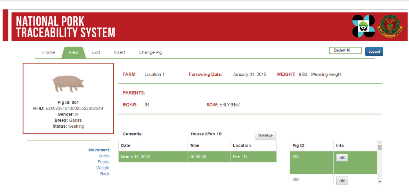According to the Philippine Statistics Authority, the total swine inventory totaled 12.48 million head in 2016, 3.98% higher compared in 2015. Likewise, stocks in backyard farms and commercial farms increased by 2.27% and 7.15%, respectively. With the increase in inventory and production, there is a need to ensure food safety and quality of pork produced.
As a response, the Philippine Council for Agriculture, Aquatic and Natural Resources Research and Development of the Department of Science and Technology (DOST-PCAARRD) has partnered with the University of the Philippines Los Baños (UPLB) to develop a pork traceability system.
 The system, which is a computer software using Radio Frequency Identification (RFID), was developed to track and trace the movement of pigs from the farm to the slaughterhouse. The system records the swine’s gender, breed, status, location, and its farrowing date. It is currently being tested in a private swine farm. Furthermore, the design of the national traceability database was already completed and ready for testing.
The system, which is a computer software using Radio Frequency Identification (RFID), was developed to track and trace the movement of pigs from the farm to the slaughterhouse. The system records the swine’s gender, breed, status, location, and its farrowing date. It is currently being tested in a private swine farm. Furthermore, the design of the national traceability database was already completed and ready for testing.
Another technology being developed is a DNA-based species authentication technology for meat and meat products. Currently, a polymerase chain reaction-based (PCR) detection of pig, cattle, goat, horse, and poultry meat was already developed. This can be utilized by the National Meat Inspection Service (NMIS) as a tool to verify meat production information based on its DNA content.
